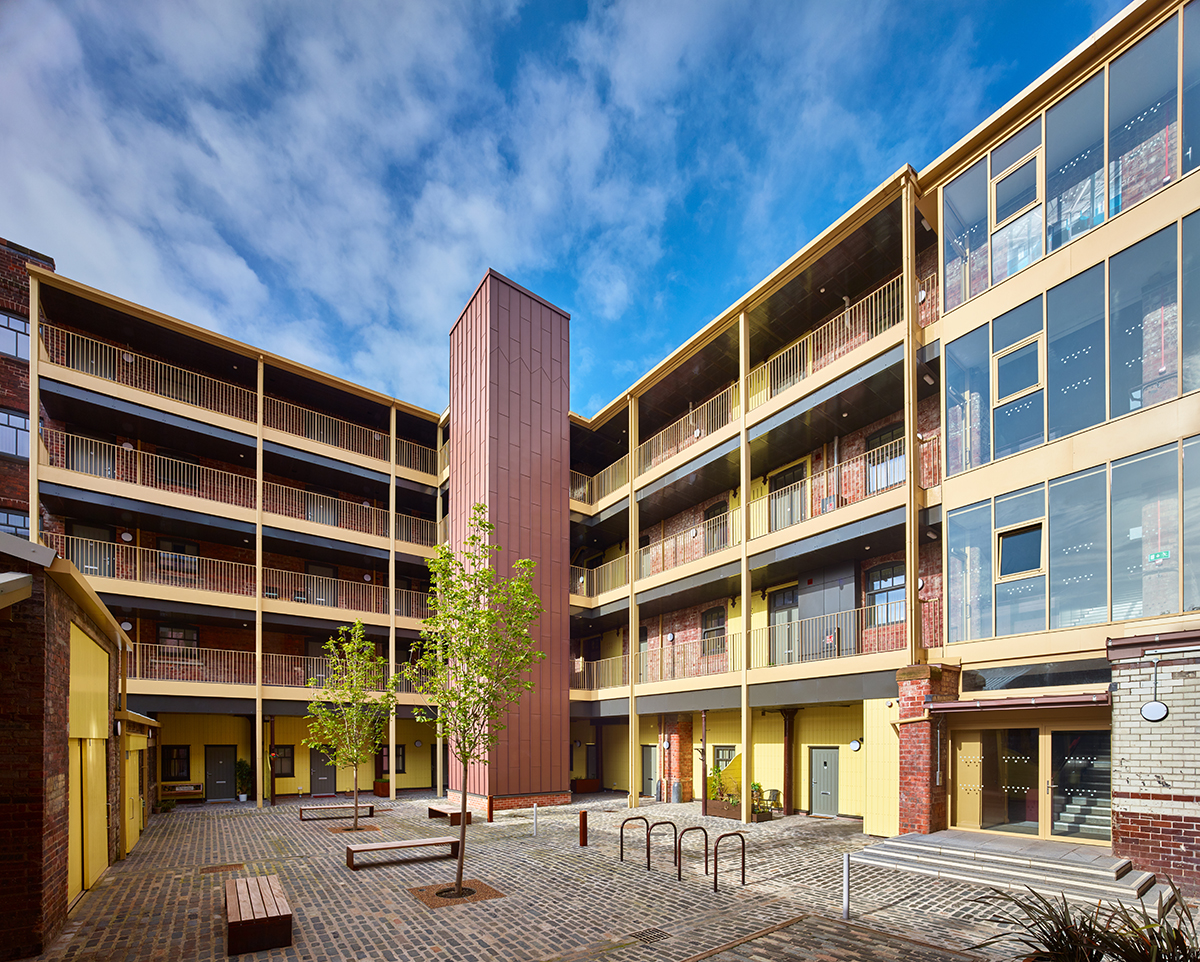
THE transformation of a Victorian council depot to create 52 new affordable homes in Glasgow has been named as the winner of Historic Environment Scotland’s Conservation and Climate Change Award, a Special Category Award of the Royal Incorporation of Architects in Scotland’s (RIAS) Awards.
The conversion of Bell Street Stables was designed by Collective Architecture for Wheatley Housing Association, and has provided 52 mid-market flats for rent in Glasgow city centre.
Bell Street Stables was originally built in 1896-98 to house the Glasgow City Cleansing Department’s horses, carts and equipment. In converting the vacant B-listed building, Collective Architecture retained many elements of the existing building, including a rare horse ramp, which enabled horses to access stables on the upper floors, as well as horse stalls, water fountains and troughs. A car-free courtyard has been re-laid with setts to create a ‘communal heart’ to the complex.
The project repaired the existing building’s masonry fabric using stone sourced from the original quarry, while the iron access gates were repaired by a nearby blacksmiths firm that made them over a century ago.
Steven Robb, deputy head of historic buildings within the planning, consents and advice service at Historic Environment Scotland (HES), said, “In this crucial year for climate action, as Scotland prepares to host COP26, we are delighted to celebrate an outstanding example of the sustainable reuse of our historic environment. Retaining and reusing the historic buildings we already have will play a key role on our journey to net zero.
“Converting existing buildings is often seen as a challenge for Housing Associations. Therefore, we warmly welcome the decision by Wheatley Housing Association to invest in not only an existing building but a listed building – a physical reminder of Glasgow’s industrial, horse-powered heritage. Together with Collective Architecture, they have given a fascinating building a new lease of life, and created a fantastic place to live in the heart of Glasgow’s city centre.”
Two further adaptations of historic Scottish buildings received commendations from the RIAS and Historic Environment Scotland:
- Edinburgh Printmakers by Page\Park Architects – the re-use of a derelict Edinburgh factory as a workspace, gallery, shop and café for Edinburgh Printmakers; and
- Water’s Edge Dundee by Nicoll Russell Studios – the transformation of a mid-19th century transit shed into new flexible office space for Tayforth Properties.
RIAS president Christina Gaiger PRIAS added, “The RIAS is extremely grateful to Historic Environment Scotland for supporting the RIAS/HES Conservation and Climate Change Award. The re-use of existing buildings is a critical element in addressing climate change, preserving our shared heritage, and meeting people’s housing needs. Bell Street Stables demonstrates how architects and clients can work together to breathe new life into old places for the benefit of us all.”








